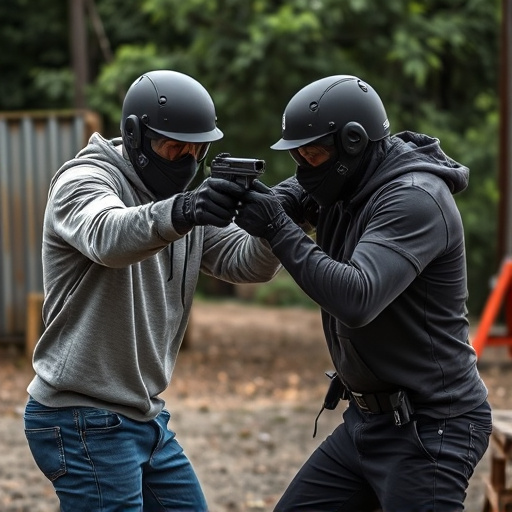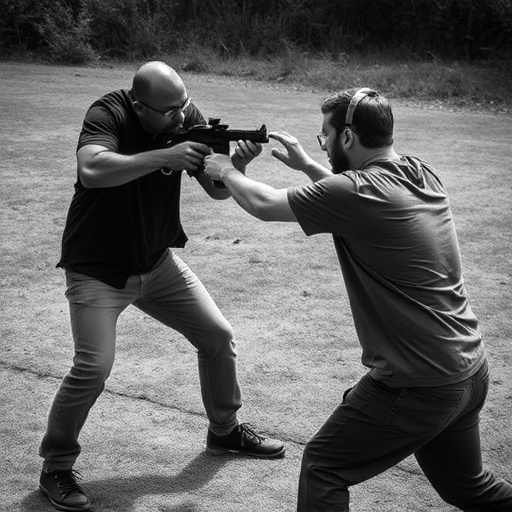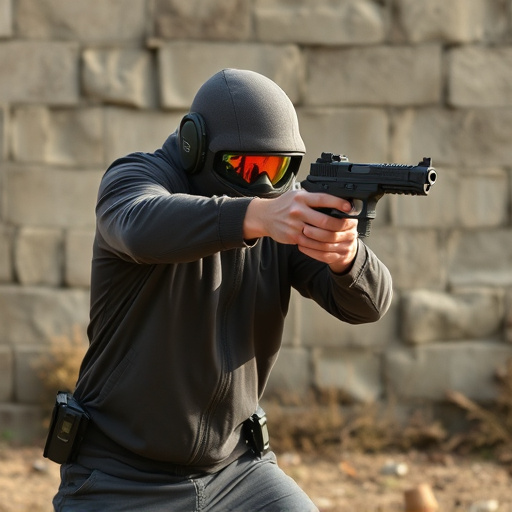Innovative "gimmick" designs mimic everyday objects like flashlights and keychains to conceal stun guns discreetly. Balancing high voltage for range with compact size and weight is crucial for the most concealable stun gun design, tailored to specific scenarios. Legal frameworks vary globally, with restrictions on range (2-3 meters) and power to ensure public safety, requiring understanding by both law enforcement and private citizens.
“Uncover the surprising world of stun weapon projectile range capabilities. From concealment techniques that make these devices virtually invisible to the naked eye, to the factors affecting their stunning reach, this article demystifies a powerful self-defense tool.
We explore the art of hiding a stun gun through innovative design—the most concealable stun gun shapes and features. Additionally, we delve into legal considerations, ensuring you understand the limitations and regulations surrounding these powerful tools. Get ready to discover how far your defense can truly reach.”
- Concealment Techniques for Stun Guns
- Factors Affecting Projectile Range
- Legal Considerations and Limitations
Concealment Techniques for Stun Guns

The most effective concealment techniques for stun guns often revolve around designing devices that look like everyday, innocuous objects. These “gimmick” stun guns mimic common items like flashlights, pens, or even keychains, allowing users to carry them discreetly. The best designs prioritize comfort and ease of access while maintaining a low profile. For instance, slim, compact models with ergonomic grips can be easily hidden in pockets or clutches without drawing attention. Additionally, materials play a crucial role; soft, flexible casings can mimic the feel of clothing or other personal items, making these stun guns even harder to detect.
Choosing a stun gun with a built-in trigger guard or a design that allows for quick activation is also beneficial for concealment. These features enable users to activate the device discreetly, without drawing unnecessary attention. By combining innovative design elements with focus on practicality and discretion, manufacturers create what are often considered the most concealable stun guns on the market.
Factors Affecting Projectile Range

The range at which a stun weapon can effectively disable a target is influenced by several key factors, and understanding these is crucial when considering the most concealable stun gun design for specific scenarios. The power and voltage of the stun device play a significant role; higher voltages generally result in increased stun distance as they deliver a stronger electric current to the target. However, it’s essential to balance this with the weapon’s overall size and weight, especially when aiming for maximum concealment.
Another critical aspect is the type of projectile used. Stun guns typically employ either dart-style projectiles or round-tipped darts, each having distinct advantages. Dart-based designs often offer greater range due to their aerodynamics, while round tips provide increased penetration and impact force. Additionally, environmental conditions, including wind speed and temperature, can significantly affect the trajectory and distance of the projectile, making them essential variables in any stun weapon’s performance.
Legal Considerations and Limitations

The legality of stun weapons, including their projectile range capabilities, varies significantly across different jurisdictions. In many countries and states, stun guns are classified as less-lethal or non-lethal force tools designed for personal protection. However, strict regulations govern their use, possession, and concealment. The most concealable stun gun design is often sought after by individuals prioritizing discretion while ensuring they comply with local laws. These devices must adhere to specific size and power restrictions set by authorities to maintain public safety.
While stun weapons are powerful tools for self-defense, their range capabilities are limited compared to traditional firearms. The effective distance of a stun gun is typically around 2–3 meters (6–10 feet), making it most useful in close quarters. Law enforcement agencies and private citizens alike must understand these limitations and legal frameworks to ensure responsible use and avoid unintended consequences.
When considering the optimal range for a stun weapon, it’s crucial to balance effectiveness with tactical strategy. The most concealable stun gun designs offer both discreetness and surprising power, allowing users to navigate challenging situations safely. Understanding the factors impacting projectile range—such as voltage, weight, and mechanism—enables responsible owners to make informed choices. Additionally, staying aware of legal considerations and limitations ensures compliance while safeguarding personal safety. By combining innovative design, tactical knowledge, and legal awareness, individuals can leverage stun weapons effectively, prioritizing both self-defense and responsible ownership.
